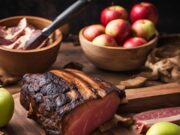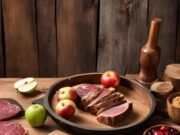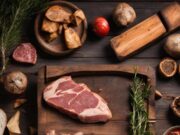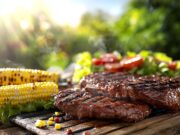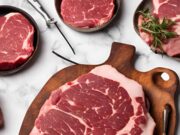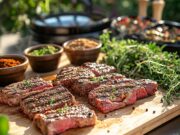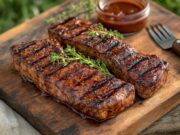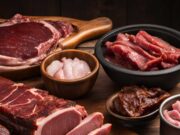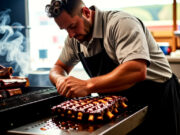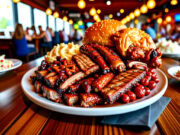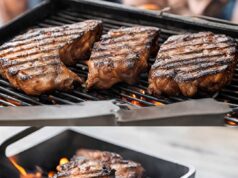For BBQ enthusiasts, the cut of meat is crucial to a successful grilling experience. Each type offers its unique flavor, texture, and cooking method, providing endless possibilities for creating delicious meals.
This guide delves into the different cuts of meat, ranging from tender ribs to juicy brisket, and offers professional tips on how to prepare and cook each one effectively.
Whether you are a seasoned pitmaster or just beginning your BBQ journey, gaining a deeper understanding of these cuts will enhance your grilling skills and elevate your overall BBQ experience.
Key Takeaways:
- Understanding the different meat cuts is essential for any BBQ lover to achieve the perfect cook, as different cuts require different cooking techniques and times.
- Knowing the difference between lean and marbled cuts will help you choose the right meat for your desired level of tenderness and flavor.
- Familiarizing yourself with the different names and locations of meat cuts on different animals will expand your grilling options and elevate your BBQ game.
Understanding Beef Cuts
Understanding beef cuts is essential for anyone looking to enhance culinary skills and appreciate the diverse flavors and textures that this meat offers. Different cuts of beef, such as ribeye, sirloin, and tenderloin, vary significantly in tenderness and taste, influenced by factors such as marbling and USDA grading.
Each cut possesses unique characteristics and recommended cooking methods that can elevate your dining experience, whether you prefer grilling, braising, or smoking. Popular cuts like the T-bone and filet mignon are highly sought after for their deliciousness, while more economical options, such as chuck and brisket, can be transformed into flavorful dishes when cooked properly.
1. Common Beef Cuts
Some of the most widely recognized and enjoyed beef cuts include ribeye, sirloin, tenderloin, chuck, brisket, flank, round, and short plate. Each of these cuts has unique characteristics that both chefs and home cooks appreciate for various recipes.
- The ribeye, known for its rich marbling, provides a deep flavor and is best suited for grilling or pan-searing, making it a popular choice among steak lovers.
- Sirloin, which is leaner yet still flavorful, works well in stir-fries or as a roast.
- The tenderloin boasts a melt-in-your-mouth tenderness, making it ideal for gourmet dishes like filet mignon.
- Chuck, with its favorable balance of meat and fat, is perfect for slow braising, allowing tougher fibers to break down into succulent bites.
- Brisket, a staple in barbecue, is celebrated for its robust flavor and is often smoked or braised to create mouthwatering dishes.
- Flank steak, with its characteristic grain, lends itself beautifully to marinating and quick cooking methods, often being used in fajitas.
- Meanwhile, round cuts offer versatility in pies or stews.
- Short plate, known for its fatty richness, is often transformed into delicious short ribs.
Understanding these nuances allows you to choose the perfect cut for your culinary endeavors.
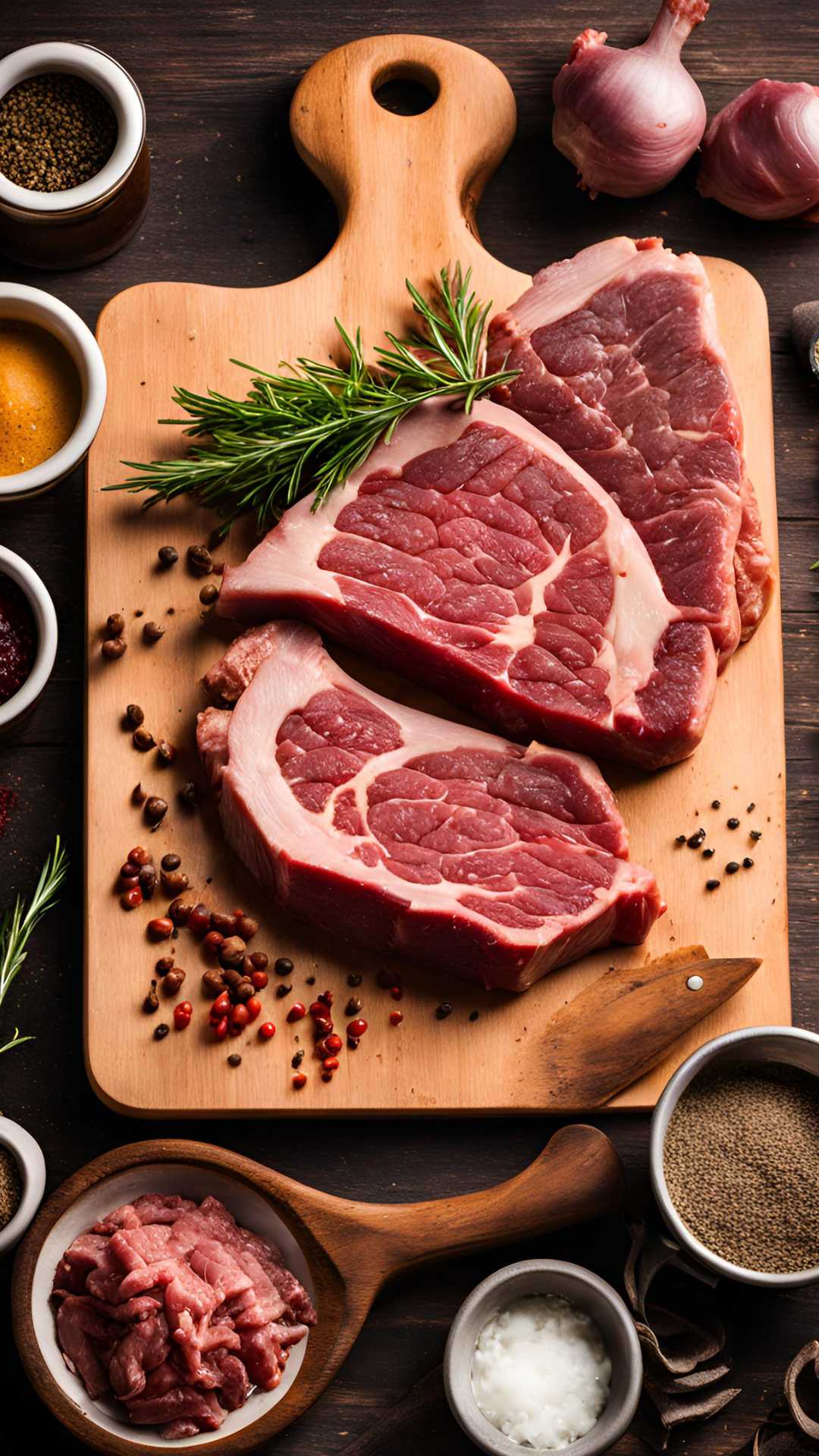
2. Premium Cuts: Wagyu and Kobe
Wagyu and Kobe beef are renowned for their superior quality and exceptional marbling, making them among the most sought-after cuts in the culinary world.
What distinguishes these meats primarily lies in their origins. Wagyu beef comes from specific Japanese cattle breeds, whereas Kobe beef represents a prestigious type of Wagyu that adheres to strict guidelines set by the Hyogo Prefecture. The unique genetics, coupled with meticulous breeding and feeding practices, contribute to their distinctive flavor profiles. The remarkable marbling in both types of beef not only enhances tenderness but also infuses a rich, buttery taste that elevates any dish.
To truly appreciate their qualities, it is advisable to utilize cooking methods such as sous vide, grilling, or pan-searing, which allow the natural flavors to shine in high-end dining experiences.
3. Understanding USDA Grading
Understanding USDA grading is essential for discerning the quality of beef, which is categorized into three primary grades: prime, choice, and select.
Each grade reflects the marbling, tenderness, and overall quality of the cut, making it important for you to ensure you are making informed choices. Prime beef, recognized for its abundant marbling, is typically the most flavorful and tender, which makes it ideal for special occasions and fine dining. Choice offers a balanced option between quality and cost, providing flavorful cuts that are suitable for everyday meals. On the other hand, select grades, while leaner, can still deliver good flavor, especially when cooked with care.
When shopping for beef, consider your cooking method and budget carefully. Look for even marbling to enhance flavor, and feel free to ask your butcher for recommendations that suit your specific needs.
Cooking Methods for Beef
There are various cooking methods for preparing beef, each offering distinct flavors and textures that can enhance your dining experience. Popular techniques include grilling, braising, and smoking, which provide different flavor profiles and levels of tenderness depending on the cut.
For example, cuts like ribeye and sirloin are particularly well-suited for grilling due to their marbling, while tougher cuts like brisket and chuck benefit from slow cooking methods such as braising to unlock their juiciness and flavor.
Additionally, marinating can elevate less tender cuts, infusing them with delicious flavors and improving their texture.
1. Grilling Techniques
Grilling is a highly regarded cooking method for beef cuts such as ribeye and sirloin, as it enhances their natural flavors and creates a delightful char. This technique not only adds a smoky aroma but also allows for various grilling methods that can elevate your overall culinary experience.
For instance, direct heat grilling is ideal for steaks, producing those desirable grill marks that signify a perfectly seared exterior. On the other hand, using indirect heat is advantageous for larger cuts of meat, enabling a slower cooking process that allows flavors to fully develop without the risk of burning.
Proper preparation, including marinating or seasoning, is essential for successful grilling. Additionally, adhering to optimal cooking times ensures tenderness and juiciness, transforming each meal into a succulent masterpiece.
2. Braising for Tender Cuts
Braising is an excellent method for cooking tougher cuts of beef, such as chuck and brisket, as it effectively breaks down connective tissues and enhances tenderness.
This technique involves a two-step process: first, you brown the meat in fat to develop a rich flavor, followed by a slow cooking phase where the beef simmers in a flavorful liquid. The importance of slow cooking cannot be overstated, as it allows the collagen in the meat to dissolve, resulting in juicy and fork-tender pieces.
You have a variety of braising liquids to choose from, including broth, wine, or even beer, each bringing its own unique depth to the dish. Popular examples of braised dishes include classic beef bourguignon and hearty pot roast, both of which beautifully showcase the incredible flavors that emerge from this cooking technique.
3. Smoking Techniques
Smoking beef introduces a unique flavor that many culinary enthusiasts appreciate, especially when using cuts like brisket that excel with long, slow cooking methods.
To truly elevate your smoking experience, consider incorporating various techniques and types of wood, each imparting distinct flavors to the meat. Woods such as hickory, mesquite, and cherry provide different profiles, ranging from robust and bold to subtle and sweet.
When preparing cuts for smoking, it is essential to start with a quality dry rub to allow the flavors to penetrate the meat effectively. For brisket, a smoking time of approximately 1.5 to 2 hours per pound at a consistent temperature of around 225°F is recommended. Other cuts, such as ribs and steaks, may require shorter cooking times, but they still benefit from similar techniques regarding seasoning and wood selection to achieve optimum flavor enhancement.
Frequently Asked Questions
1. What is the difference between a ribeye and a New York strip steak?
A ribeye comes from the rib section of the cow and is known for its marbling and tenderness, while a New York strip steak comes from the short loin and is leaner but still flavorful.
2. Which cut of beef is best for slow cooking on the BBQ?
Chuck roast is a great choice for slow cooking on the BBQ as it has a lot of connective tissue that breaks down and becomes tender during the cooking process.
3. What is the best way to cook a flank steak on the BBQ?
Flank steak is best cooked quickly over high heat to ensure it stays tender. For the best results, cook it for 3-4 minutes on each side and let it rest for 5 minutes before slicing against the grain.
4. Can I use a pork tenderloin instead of a pork loin for BBQ?
Yes, you can use a pork tenderloin on the BBQ, but it is important to keep an eye on it as it cooks quickly and can dry out easily.
5. What is the difference between baby back ribs and spare ribs?
Baby back ribs come from the top of the rib cage and are smaller and more tender, while spare ribs come from the belly area and are larger and have more fat and connective tissue.
6. How do I know when my BBQ chicken is cooked properly?
The best way to ensure your BBQ chicken is cooked properly is to use a meat thermometer and check that the internal temperature reaches 165°F. The juices should also run clear when pierced with a fork.


